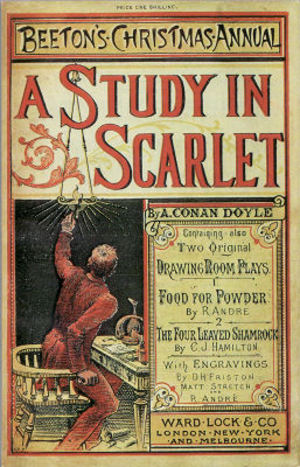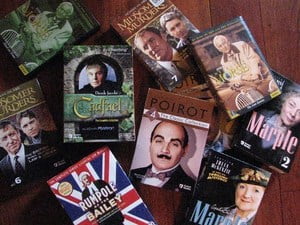Certain things should be avoided if you are planning on writing a mystery novel or screenplay. The unpleasant truth of the genre is that it is getting exceedingly difficult to write a masterpiece of mystery fiction. Almost every kind of murder that can be committed has been written about, and nearly every plot twist that you think is original exists in any number of books or movies you just haven’t read or seen. Fans of mystery novels and movie mysteries are far more sophisticated than those who read the original Sherlock Holmes stories or went to see 1930s detective flicks. The red herring is the oldest trick in the book when it comes to trying to fool your audience, but today’s mystery fans can usually spot them pretty early. As a result, some of the best and worst mysteries in recent years have been exercises in topping one outrageous plot twist after another. The thing is, of course, that what passes for a dazzling plot twist today is really nothing but a newer breed of red herring.
The red herring, in case you aren’t familiar with the term, is something meant to distract you from guessing the real identity of the culprit and lead you down the wrong path. Any character who seems a little too suspicious or obviously guilty is almost always a red herring. A red herring can also be a piece of evidence, however. Or a clue. And too many beginning mystery and suspense writers utilize a red herring clue that even a mystery-a-month reader can figure out is going nowhere. Even worse is the obvious clue that reveal the identity too early. Any big fan of mystery fiction will be capable of putting these types of overused clues together and figure out the end even quicker than you did while writing it. Among the most clichéd clues in mystery fiction, ones that should be avoided in most cases, are birthmarks, a smudged diary or one missing pages, a clock that has stopped, cigarette ashes where they shouldn’t be. These things are an immediate tipoff to a seasoned mystery writer and he will soon figure out if the clue is real or a red herring.
One of the biggest things to avoid when writing a mystery is making your least likely suspect the one whodunit. The unlikely baby-faced killer is as big a cliché as the shadowy figure who turns out to be working for the good guys. Try all you can to avoid making anyone seem too innocent or too guilty. Another thing to avoid is introducing one item that contains two clues. For instance, the bloody glove. If a glove is missing and you want to include it, that’s fine. But don’t add blood to it unless are prepared for it to be a real clue. Typically, a clue in a mystery like missing glove that just happens to show up with the blood of the victim on it is as surefire signal to your reader or viewer to dismiss it as a phony. More often than not, any clue in a mystery that appears to offer an open and shut case for guilt turns out to be a dead end and the well-read mystery loves knows it.
And finally, there are some very specific things that should be avoided. Any disgruntled employee who makes an open threat to a boss who winds up the victim is usually not guilty. Of course, you could always turn the tables and make him actually be the one, but then you’ve got to create a viable reason for why his obvious guilt can’t possibly make him the killer. (A great example of how to make this work takes place in an old Ellery Queen TV episode where the guy who winds up being the killer announced his bloody intentions. The writers got around this by making it seem logical for a while that his physical injury sustained in WWII made it impossible for him to commit the crime as it was assumed to have happened, but didn’t.) Likewise, try to avoid the hoary plot of figuring out which heir to a fortune offed the stingy old miser. It’s almost never the person who doesn’t cry in bereavement, and it’s almost never the person who got more than was expected in the will. At the same time, it also seems that the guy who got screwed the most is usually exempt from being the killer. Since you can only have so many suspects before your readers begin getting confused, that will tend to leave only two or three viable suspects at most. The killer of the benefactor has been done to death. Avoid it.




